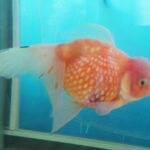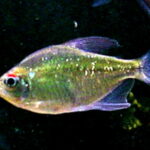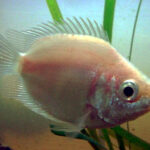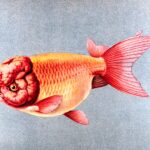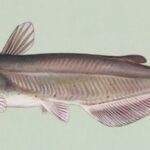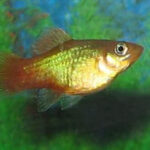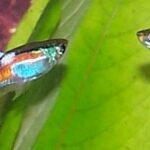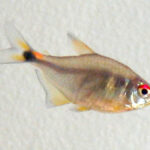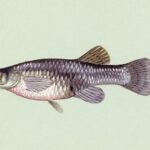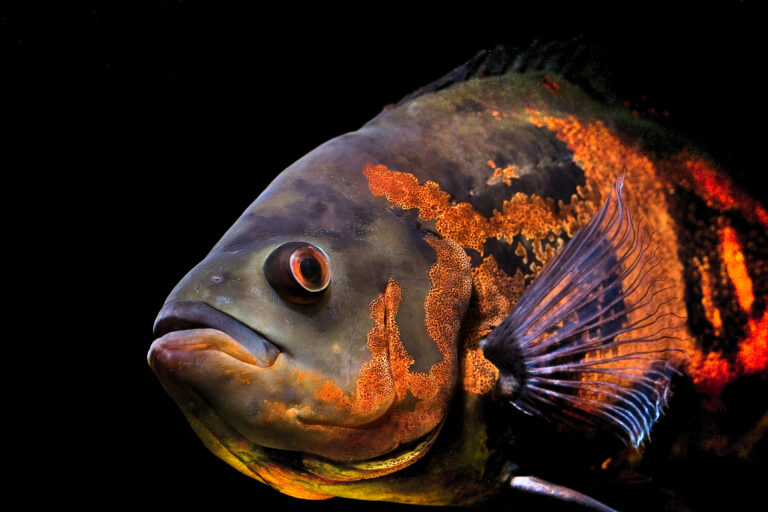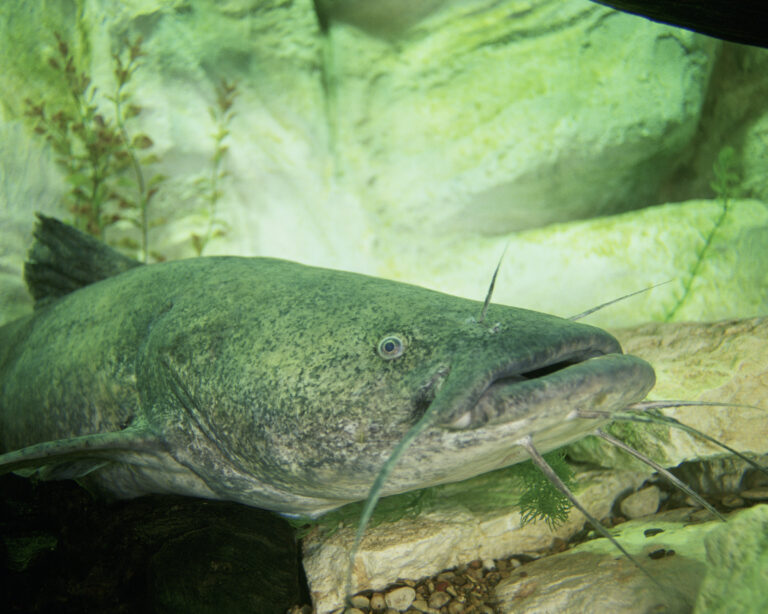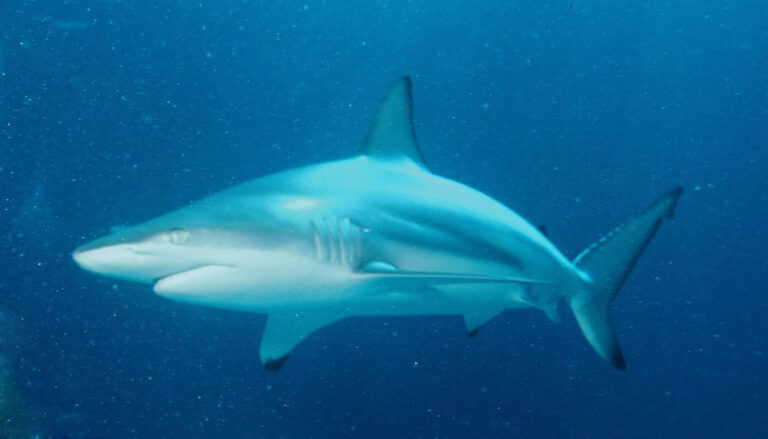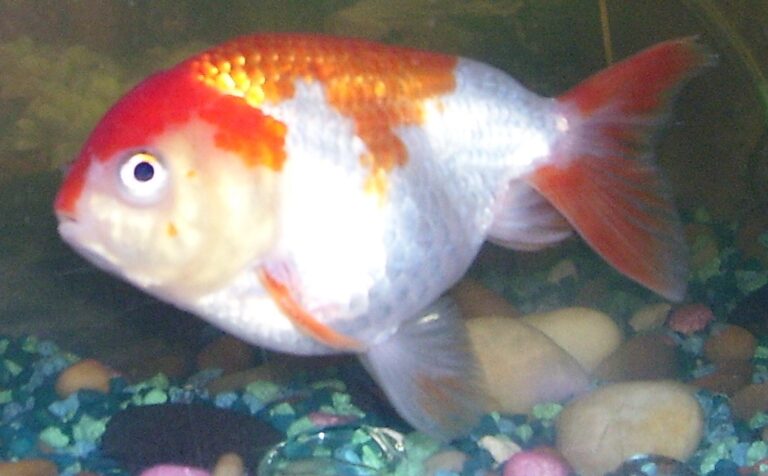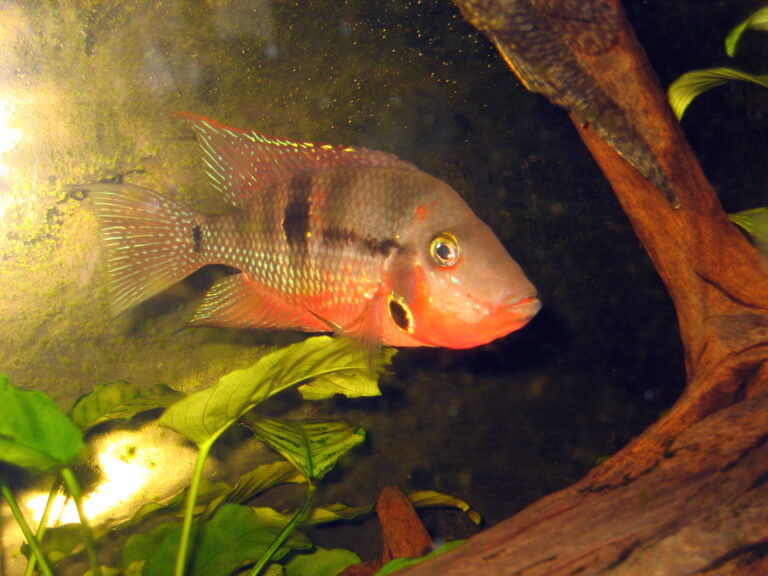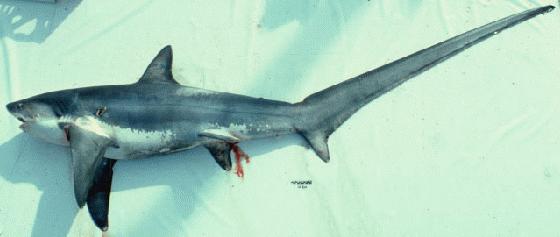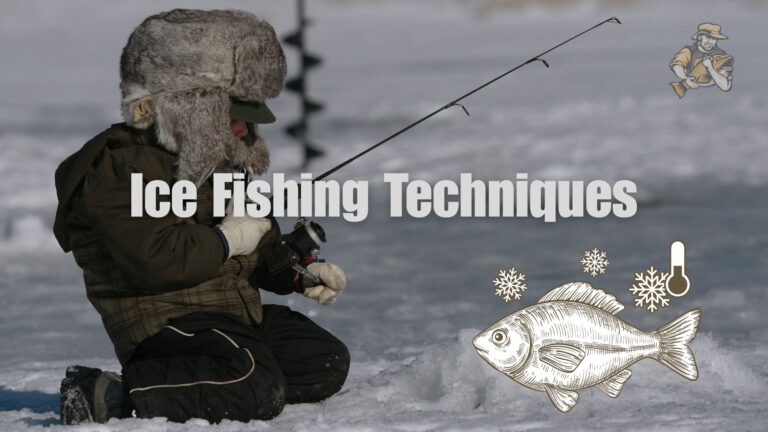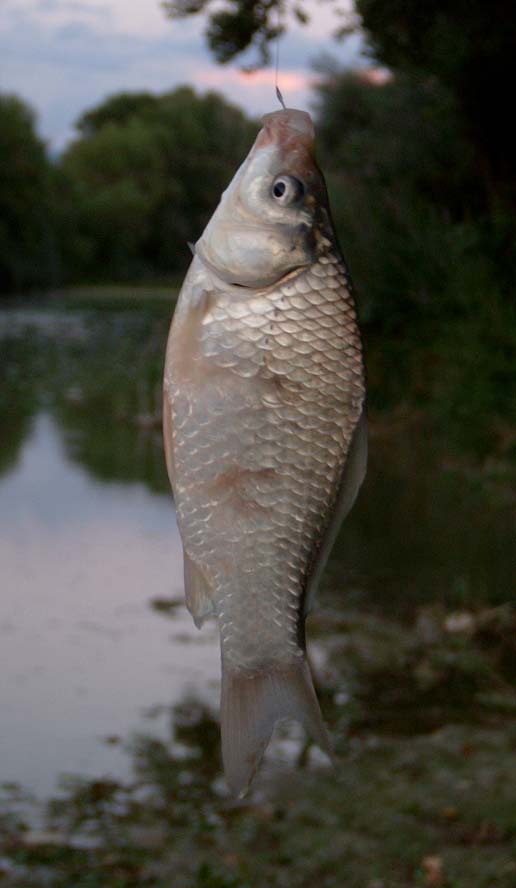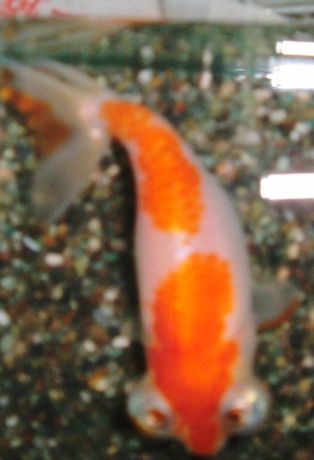Red Devil Cichlid
By Ryan Maron | Last Modified: June 10, 2025
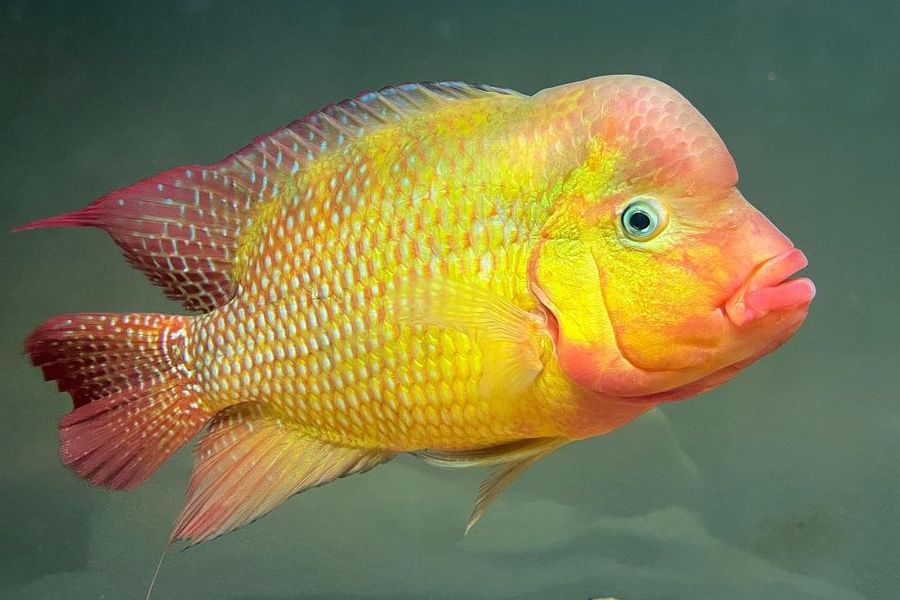
The Red Devil Cichlid stands as one of Central America’s most formidable and captivating freshwater predators, renowned for its striking crimson coloration and aggressive territorial behavior. Scientifically known as *Amphilophus labiatus*, this robust cichlid species has earned its common name through both its fiery appearance and notorious temperament that makes it a challenging yet rewarding species for experienced aquarists and a fascinating subject for ichthyologists studying Neotropical fish communities.
This species plays a crucial ecological role as a dominant predator in its native lake ecosystems, particularly in Nicaragua’s Great Lakes where it helps regulate prey fish populations and maintains the delicate balance of these ancient volcanic crater lakes. The Red Devil Cichlid’s impressive size, reaching lengths of up to 15 inches, combined with its territorial nature and parental care behaviors, makes it a keystone species that influences the structure and dynamics of its aquatic habitat. Its economic importance extends beyond the ornamental fish trade, as it serves as both a food fish in its native range and a popular specimen in the global aquarium industry.
| Feature | Details |
|---|---|
| Common Name | Red Devil Cichlid |
| Scientific Name | Amphilophus labiatus |
| Family | Cichlidae |
| Typical Size | 25-38 cm (10-15 inches), 1-2 kg |
| Habitat | Volcanic crater lakes and rivers |
| Diet | Carnivorous to omnivorous |
| Distribution | Central America, primarily Nicaragua |
| Conservation Status | Least Concern |
Taxonomy & Classification
The Red Devil Cichlid belongs to the family Cichlidae, one of the most diverse and evolutionarily successful fish families in freshwater environments worldwide. Within this family, *Amphilophus labiatus* is classified under the subfamily Cichlinae, which encompasses the Neotropical cichlids of Central and South America. The genus *Amphilophus* represents a group of large, robust cichlids commonly referred to as guapotes in their native range.
Taxonomically, the species classification follows the hierarchy: Kingdom Animalia, Phylum Chordata, Class Actinopterygii, Order Cichliformes, Family Cichlidae, Genus *Amphilophus*, and Species *labiatus*. The specific epithet “labiatus” refers to the prominent lips that characterize mature specimens, particularly breeding individuals. This morphological feature becomes more pronounced with age and sexual maturity, serving as both a feeding adaptation and a display characteristic during territorial disputes.
The Red Devil Cichlid has undergone several taxonomic revisions since its initial scientific description. Originally classified within the genus *Cichlasoma*, molecular phylogenetic studies have revealed that this broad genus was polyphyletic, leading to the reclassification of many species into more accurate genera. The current placement within *Amphilophus* reflects closer evolutionary relationships with other Central American crater lake cichlids, forming what researchers term the Midas cichlid species complex.
Recent genetic analyses have identified several closely related species within this complex, including *Amphilophus citrinellus* (Midas Cichlid) and *Amphilophus zaliosus*, with which the Red Devil Cichlid shares common ancestry and occasionally hybridizes in captivity. These relationships highlight the rapid evolutionary radiation that has occurred within Central American crater lakes, where geographic isolation has driven speciation over relatively short geological timeframes.
Physical Description
The Red Devil Cichlid exhibits remarkable sexual dimorphism and ontogenetic color changes that make it one of the most visually striking freshwater fish species. Adult specimens typically reach lengths of 25 to 38 centimeters, with exceptional individuals approaching 40 centimeters in optimal conditions. Males generally attain larger sizes than females, often exceeding 35 centimeters and weighing between 1.5 to 2 kilograms when fully mature.
The most distinctive feature of the Red Devil Cichlid is its intense coloration, which can range from deep crimson to bright orange-red, though significant color variation exists within populations. Juvenile specimens often display a grayish or pale yellow base coloration with faint vertical bars, gradually developing the characteristic red pigmentation as they mature. This color transformation typically begins around 10-12 centimeters in length and continues intensifying throughout their lives.
Body morphology reflects the species’ predatory lifestyle, with a deep, laterally compressed profile and a large head comprising approximately one-third of the total body length. The mouth is terminal and equipped with thick, fleshy lips that become more pronounced in mature individuals, particularly during breeding seasons. These lips serve multiple functions, including enhanced sensory perception for food detection and improved suction feeding capabilities in rocky substrates.
The dorsal fin extends along most of the back, featuring 16-17 spines and 10-12 soft rays, while the anal fin contains 3-4 spines and 8-9 soft rays. Mature males develop elongated fin filaments, particularly on the dorsal and anal fins, which enhance their visual display during territorial encounters. The caudal fin is fan-shaped and provides powerful thrust for rapid acceleration during predatory attacks or territorial defense. Color patterns can include subtle banding or spotting, with some individuals displaying a distinctive black lateral stripe or scattered dark markings across the body.
Habitat & Distribution
The Red Devil Cichlid’s natural distribution centers on the volcanic crater lakes and associated river systems of Nicaragua, with primary populations found in Lake Managua (Xolotlán) and Lake Nicaragua (Cocibolca). These ancient crater lakes, formed by volcanic activity approximately 500,000 years ago, provide unique environmental conditions that have shaped the evolution of this remarkable species and its associated cichlid community.
Lake Nicaragua, Central America’s largest freshwater body, serves as the species’ primary habitat, offering diverse ecological niches from shallow rocky shores to deeper pelagic zones reaching depths of 26 meters. The lake’s alkaline waters, with pH levels ranging from 7.2 to 8.5, and relatively stable temperatures between 24-28°C throughout the year, create optimal conditions for Red Devil Cichlid populations. These parameters, combined with abundant prey resources and suitable spawning substrates, support healthy breeding populations.
The species also inhabits connecting river systems, including the San Juan River, which flows from Lake Nicaragua to the Caribbean Sea. In riverine environments, Red Devil Cichlids typically occupy slower-moving sections with rocky or sandy substrates, avoiding swift currents that characterize highland tributaries. Water quality parameters in these systems generally mirror those of the crater lakes, with moderate hardness levels between 8-15 dGH and consistent tropical temperatures.
Human activities have significantly impacted natural habitat conditions over recent decades. Agricultural runoff has increased nutrient loading in both crater lakes, leading to periodic algal blooms and oxygen depletion events. Deforestation in watershed areas has altered sediment inputs and water clarity, while introduced species have modified predator-prey dynamics. Despite these challenges, Red Devil Cichlid populations remain stable, demonstrating considerable ecological resilience. The species has also established populations in several Central American countries through both natural dispersal and human introduction, though genetic studies suggest these may represent distinct subspecies or closely related taxa.
Diet & Feeding Behavior
The Red Devil Cichlid exhibits opportunistic feeding behavior that shifts from primarily carnivorous to omnivorous depending on habitat conditions, prey availability, and individual size. Juvenile specimens focus heavily on invertebrate prey, including chironomid larvae, amphipods, and small crustaceans that inhabit the rocky substrates of their crater lake environments. This protein-rich diet supports rapid growth rates during their first year of life.
Adult Red Devil Cichlids demonstrate remarkable feeding versatility, consuming a wide range of prey items that reflects their role as generalist predators. Primary food sources include smaller fish species, particularly juvenile cichlids and characins, which can comprise up to 60% of their diet during peak feeding periods. Crustaceans, including freshwater shrimp and crayfish, provide essential nutrients and represent approximately 25% of adult dietary intake. The species’ powerful pharyngeal teeth, arranged in multiple rows, efficiently process hard-shelled prey items.
Plant material becomes increasingly important in adult diets, particularly during dry seasons when animal prey density decreases. Algae, aquatic vegetation, and organic detritus supplement nutritional requirements and may constitute up to 40% of dietary intake in some populations. This omnivorous flexibility allows Red Devil Cichlids to maintain body condition during environmental fluctuations that affect prey availability.
Feeding behavior exhibits distinct territorial patterns, with dominant individuals establishing and defending prime foraging areas near rocky outcrops or structural features that concentrate prey. These fish employ various hunting strategies, including ambush predation from concealed positions and active pursuit of schooling prey fish. Their thick lips facilitate effective suction feeding, allowing them to extract invertebrates from crevices and soft substrates. Foraging activity peaks during dawn and dusk periods, coinciding with increased prey activity and reduced visibility that aids in predation success. The species’ feeding behavior also varies seasonally, with increased consumption rates during breeding periods to support reproductive energy demands.
Behavior & Adaptations
Red Devil Cichlids exhibit complex behavioral patterns that reflect their evolution in competitive crater lake environments where territorial success directly influences reproductive opportunities and survival. Territorial behavior forms the foundation of their social structure, with adult individuals establishing and aggressively defending areas ranging from 5 to 20 square meters, depending on habitat quality and population density. These territories typically center around suitable spawning sites, such as flat rocks or cleared sandy areas, which serve as focal points for both feeding and reproduction.
Aggressive interactions follow predictable escalation patterns that minimize physical injury while establishing dominance hierarchies. Initial encounters involve lateral displays where individuals position themselves parallel to competitors, flaring their gill covers and extending fins to maximize apparent body size. If visual displays fail to resolve conflicts, fish may engage in mouth-wrestling behaviors, locking jaws and attempting to overpower opponents through sustained pushing contests. These confrontations rarely result in serious injury, as the losing individual typically retreats before sustaining damage.
The species demonstrates remarkable learning abilities and environmental awareness that enable successful adaptation to changing conditions. Red Devil Cichlids can recognize individual neighbors and adjust territorial behavior accordingly, showing reduced aggression toward familiar fish that pose minimal threats while maintaining vigilance against new intruders. This neighbor recognition system optimizes energy expenditure and reduces unnecessary conflicts in stable populations.
Parental care behaviors represent some of the most sophisticated adaptations observed in freshwater fish species. Both parents participate in territory preparation, offspring protection, and fry guidance, with behavioral modifications continuing for several weeks after hatching. Adults communicate through a variety of visual signals, including color changes, fin positioning, and body postures that convey information about reproductive status, territorial boundaries, and threat levels. These behavioral adaptations have contributed significantly to the species’ success in competitive environments and their popularity among aquarium enthusiasts who appreciate their complex social interactions.
Reproduction & Life Cycle
The Red Devil Cichlid follows a sophisticated reproductive strategy characteristic of substrate-spawning cichlids, with elaborate courtship rituals and extensive parental care that ensures high offspring survival rates. Sexual maturity typically occurs between 12-18 months of age, corresponding to body lengths of 15-20 centimeters, though optimal breeding performance develops around 2-3 years when fish reach full adult size and territorial dominance.
Breeding cycles are influenced by environmental factors including water temperature, photoperiod, and seasonal rainfall patterns that affect food availability. In their native crater lake habitats, spawning activity peaks during the dry season from December through April, when stable water levels and increased prey density provide optimal conditions for fry development. Mature pairs may spawn multiple times per year, with intervals of 6-8 weeks between successful reproduction events.
Courtship begins with intensive territorial establishment as males select and prepare spawning sites through substrate cleaning and debris removal. Females assess potential mates based on territory quality, male size, and behavioral displays that demonstrate genetic fitness. Accepted pairs engage in synchronized swimming patterns and mutual substrate preparation that can continue for several days before egg deposition occurs.
Spawning typically involves the deposition of 300-800 adhesive eggs on carefully cleaned flat surfaces, with larger females producing higher egg counts. Both parents participate in egg care, fanning the clutch to maintain water circulation and removing damaged or fungal-infected eggs. Incubation lasts 3-4 days at optimal temperatures, followed by a yolk-sac absorption period during which fry remain attached to spawning substrates.
Parental care extends for 4-6 weeks after hatching, with both adults guarding fry schools and guiding them to feeding areas within established territories. Parents communicate with offspring through chemical signals and behavioral cues, maintaining group cohesion while teaching foraging techniques. Fry reach independence at approximately 2-3 centimeters in length, though mortality rates during this transition period can exceed 70% due to predation pressure and environmental challenges. This intensive parental investment strategy represents an evolutionary adaptation to the competitive pressures present in species-rich crater lake ecosystems.
Predators & Threats
Adult Red Devil Cichlids face relatively few natural predators due to their large size, aggressive nature, and defensive capabilities, though several threats exist throughout different life stages. Juvenile specimens experience significantly higher predation pressure from a variety of aquatic and terrestrial predators that exploit their smaller size and limited defensive abilities during the first months of life.
Piscivorous birds represent the primary predation threat to juvenile and sub-adult Red Devil Cichlids in shallow water habitats. Great blue herons, cattle egrets, and various species of kingfishers frequently hunt in the rocky littoral zones where young cichlids seek shelter and food. These aerial predators are particularly effective during dawn and dusk feeding periods when fish activity increases and water clarity provides optimal hunting conditions.
Aquatic predators include larger cichlid species, particularly adult guapotes and other members of the *Amphilophus* complex that may cannibalize smaller conspecifics during territorial disputes or food shortages. Introduced species have also created novel predation pressures, with non-native catfish and bass species potentially impacting juvenile survival rates, though comprehensive studies on these interactions remain limited.
Human activities pose increasingly significant threats to Red Devil Cichlid populations through habitat modification and water quality degradation. Agricultural intensification in watershed areas has increased sedimentation and nutrient loading in crater lakes, leading to periodic algal blooms and oxygen depletion events that stress fish populations. Urban development around lake margins has reduced spawning habitat availability and increased pollution inputs from domestic and industrial sources.
Climate change presents emerging threats through altered precipitation patterns and temperature regimes that may disrupt breeding cycles and prey availability. Extended drought periods can concentrate fish in reduced habitat areas, intensifying competition and disease transmission risks. Conversely, extreme rainfall events may cause rapid water level fluctuations that destroy spawning sites and separate parents from developing fry. The species’ restricted native range makes populations particularly vulnerable to these environmental changes, as limited dispersal opportunities reduce adaptive potential compared to more widely distributed fish species.
Conservation Status
The International Union for Conservation of Nature (IUCN) currently classifies the Red Devil Cichlid as “Least Concern” based on stable population trends and relatively wide distribution within its native Central American range. However, this classification requires ongoing monitoring as localized threats continue to impact specific populations, particularly in heavily developed areas around Lake Managua and Lake Nicaragua’s northern shores.
Population assessments conducted over the past two decades indicate that Red Devil Cichlid numbers remain stable in core habitat areas, though density fluctuations occur in response to environmental variables and human activities. The species’ reproductive success and adaptability have maintained viable breeding populations despite increasing anthropogenic pressures on crater lake ecosystems. Natural population resilience stems from high fecundity rates, extended parental care, and behavioral flexibility that enables adaptation to changing conditions.
Regional conservation efforts focus primarily on watershed protection and water quality management rather than species-specific interventions. Nicaragua’s environmental authorities have implemented regulations limiting agricultural runoff and industrial discharge into crater lake systems, though enforcement remains inconsistent. International cooperation through Central American environmental agreements has supported habitat protection initiatives, particularly for transboundary watersheds that affect multiple countries.
Research priorities include long-term population monitoring, genetic diversity assessments, and climate change impact studies that will inform future conservation strategies. Scientists emphasize the importance of maintaining habitat connectivity between crater lakes and river systems to preserve natural migration patterns and genetic exchange. The species’ popularity in the aquarium trade has created additional conservation considerations, as sustainable collection practices must balance economic benefits with population protection.
Ex-situ conservation efforts include captive breeding programs at several research institutions and public aquariums, though these primarily serve educational and research purposes rather than population supplementation. The robust nature of Red Devil Cichlids in captivity provides valuable opportunities for behavioral and physiological studies that contribute to wild population understanding and management strategies.
Human Interaction
The relationship between humans and Red Devil Cichlids spans multiple dimensions, from traditional subsistence fishing in Central American communities to their prominent role in the global ornamental fish trade. In Nicaragua and surrounding regions, these cichlids serve as an important protein source for local populations, particularly in rural communities near crater lakes where fishing represents both cultural tradition and economic necessity.
Artisanal fishing methods typically employ gill nets, hook and line, and traditional fish traps constructed from locally available materials. Seasonal fishing patterns align with natural breeding cycles, with peak harvests occurring during dry season months when fish concentrate in shallow spawning areas. Local fishing practices generally maintain sustainable harvest levels, as community-based management systems have evolved to prevent overexploitation of fish populations that represent crucial food security resources.
The aquarium trade has significantly increased human interaction with Red Devil Cichlids since the 1960s, when specimens first entered international markets. Their striking coloration, interactive behavior, and relative hardiness make them popular among experienced aquarists seeking challenging and rewarding species. However, their large adult size and aggressive temperament limit their suitability to spacious aquarium systems and knowledgeable hobbyists capable of providing appropriate care.
Commercial breeding operations in Southeast Asia, particularly in Thailand and Malaysia, now supply the majority of aquarium trade specimens, reducing pressure on wild populations while meeting global demand. These facilities have developed specialized techniques for maintaining breeding colonies and producing consistent color varieties that appeal to different market segments. Cichlid breeding programs have also created selectively bred strains with enhanced coloration or modified behavioral characteristics.
Educational and research applications provide additional human interaction opportunities, as Red Devil Cichlids serve as model organisms for studying territorial behavior, parental care, and evolutionary ecology. University research programs and public aquariums utilize these fish to demonstrate complex behavioral patterns and evolutionary adaptations to students and visitors, contributing to broader appreciation for freshwater biodiversity and conservation needs.
Interesting Facts
Red Devil Cichlids possess several remarkable characteristics that distinguish them from other freshwater fish species and contribute to their reputation as one of Central America’s most fascinating cichlids. Their ability to recognize individual humans and respond differently to familiar versus unfamiliar caretakers demonstrates cognitive abilities rarely observed in fish species, suggesting complex neural processing capabilities that parallel those found in higher vertebrates.
The species exhibits extraordinary jaw strength, with bite forces measured at over 500 Newtons per square centimeter, enabling them to crush hard-shelled prey items and manipulate substrate materials during territory preparation. This powerful bite force, combined with specialized pharyngeal teeth, allows them to process prey items that other fish of similar size cannot handle effectively.
Color variation within Red Devil Cichlid populations includes rare leucistic individuals that display pale yellow or white coloration instead of the typical red pigmentation. These color morphs occur naturally at frequencies of approximately 1 in 10,000 individuals and command premium prices in the aquarium trade due to their striking appearance and rarity.
Behavioral studies have documented problem-solving abilities that include tool use, with captive specimens learning to manipulate objects to access food rewards and modify their environment to improve territorial advantages. Some individuals have been observed moving rocks weighing several times their body weight to create preferred spawning sites or territorial boundaries.
The species’ longevity exceeds that of most similarly-sized freshwater fish, with documented lifespans reaching 18-20 years in optimal conditions. This extended lifespan, combined with their complex social behaviors, allows for the development of sophisticated territorial relationships and learned behaviors that accumulate over time.
Red Devil Cichlids demonstrate remarkable parental dedication, with documented cases of adults continuing to protect and guide offspring for up to three months after hatching. This extended care period is among the longest recorded for any freshwater fish species and contributes significantly to juvenile survival rates in competitive environments.
Frequently Asked Questions
How large do Red Devil Cichlids grow and what size aquarium do they require?
Red Devil Cichlids typically reach 25-38 centimeters (10-15 inches) in length, with males often growing larger than females. Due to their substantial size and aggressive territorial behavior, they require spacious aquarium systems of at least 300-400 liters (75-100 gallons) for a single adult specimen. Breeding pairs or community setups demand even larger systems to accommodate territorial requirements and reduce aggressive interactions with other fish.
Are Red Devil Cichlids suitable for community aquariums with other fish species?
Red Devil Cichlids are generally not recommended for community aquarium settings due to their highly aggressive nature and territorial behavior. They may attack or kill smaller fish and can injure species of similar size during territorial disputes. Experienced aquarists sometimes maintain them with other large, robust Central American cichlids, but such arrangements require extensive space and careful monitoring to prevent serious conflicts.
What water parameters do Red Devil Cichlids prefer in captivity?
Red Devil Cichlids thrive in water conditions that mirror their native crater lake environment, including temperatures between 24-28°C (75-82°F), pH levels of 7.2-8.5, and moderate hardness of 8-15 dGH. Stable water quality with efficient filtration is essential, as these large fish produce significant waste loads that can quickly degrade aquarium conditions if not properly managed through regular water changes and adequate biological filtration.
How can aquarists distinguish between male and female Red Devil Cichlids?
Sexual dimorphism in Red Devil Cichlids becomes apparent as fish mature, with males typically developing more intense coloration, larger overall size, and more pronounced fin extensions. Males also develop a distinctive nuchal hump (forehead protrusion) and thicker lips compared to females. During breeding periods, females may display a more rounded belly profile, while males exhibit more aggressive territorial behavior and enhanced color intensity during courtship displays.
Conclusion
The Red Devil Cichlid represents one of Central America’s most remarkable freshwater predators, combining striking visual appeal with complex behavioral adaptations that reflect millions of years of evolution in unique crater lake environments. As both an important component of Neotropical aquatic ecosystems and a significant species in the global aquarium trade, *Amphilophus labiatus* continues to provide valuable insights into cichlid evolution, territorial behavior, and adaptive strategies that enable success in competitive freshwater habitats. Ongoing conservation efforts and responsible aquarium practices will ensure that future generations can appreciate and study this extraordinary species while maintaining the ecological integrity of its native Central American waters.
Share The Article:
More Fish Species:
-
Oscar Fish
The Oscar Fish (*Astronotus ocellatus*) stands as one of South America’s most recognizable freshwater cichlids, earning widespread recognition both…
-
Flathead Catfish
The Flathead Catfish stands as one of North America’s most formidable freshwater predators, commanding respect from both anglers and…
-
Blacktip Shark
The Blacktip Shark (Carcharhinus limbatus) stands as one of the most recognizable and ecologically significant predators in tropical and…
-
Tiger Barb
The Tiger Barb (Puntigrus tetrazona) stands as one of Southeast Asia’s most recognizable freshwater cyprinids, distinguished by its vibrant…
-
Lionhead Goldfish
The Lionhead Goldfish represents one of the most distinctive and cherished ornamental varieties within the goldfish family, captivating aquarists…
-
Firemouth Cichlid
The Firemouth Cichlid (*Thorichthys meeki*) stands as one of Central America’s most recognizable freshwater fish species, distinguished by its…
Discover
-
Texas Saltwater Fishing: Essential Tips From Adam
It was June 2010, and man was I cocky heading into that first Texas saltwater trip. Drove down from…
-
Michigan Fishing License 2025: Complete Cost & Requirements Guide
Ask any angler about the most frustrating part of fishing, and paperwork will likely rank right up there with…
-
15 Panfish Fishing Secrets: Easy Catches for Beginners & Pros
You know what’s funny about panfish? These little fighters have probably hooked more new anglers than any other species,…
-
Texas Fishing License Guide: 2025 Costs & Requirements
I still remember the day a Texas game warden approached me on Lake Texoma while I was reeling in…
-
Best Fishing Spots in Florida: Top Locations for 2025
Florida’s nickname as the “Fishing Capital of the World” isn’t just clever marketing. With over 7,700 lakes, 10,550 miles…
-
Fishing Ethics: Conservation, Catch-and-Release, and Angler Responsibility
I was ten years old when my grandfather caught me throwing rocks at a school of bluegill near our…
Discover
-
How to Fish a Jellyfish: Safe Methods & Expert Tips
Jellyfish fishing is a specialized niche within the broader world of angling that requires unique techniques, specific knowledge, and…
-
Thresher Shark
The Thresher Shark represents one of the ocean’s most distinctive and captivating apex predators, renowned for its extraordinarily elongated…
-
Ice Fishing Techniques for Anglers in 2025
Last January, I was out on Higgins Lake during that brutal cold snap – you remember, when it dropped…
-
Goldfish
The goldfish (Carassius auratus) stands as one of the most culturally significant and scientifically fascinating species in freshwater aquaculture…
-
Louisiana Redfish Fishing: Best Spots & Tactics for Beginners
Finding that first bull red is a moment you never forget. The pull, the power – it’s something special….
-
Celestial Eye Goldfish
The Celestial Eye Goldfish represents one of the most distinctive varieties within ornamental aquaculture, known scientifically as Carassius auratus….

